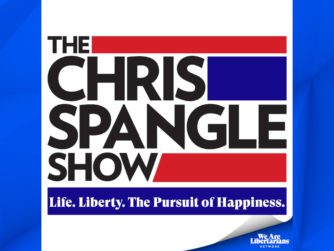 In 1850, Frederic Bastiat — one of the greatest of the classical economists, wrote what is arguably one of the most powerful essays ever written, which describes the foolishness of government intervention in the free market. In the parable of the broken window he clearly explains that economic decision making can adequately be described as an iceberg where what is seen on the surface is barely even a fraction of the story. It is not only that which is seen that is important, but also that which is unseen — or under the surface — that holds more truth to the nature of economics and the market.
In 1850, Frederic Bastiat — one of the greatest of the classical economists, wrote what is arguably one of the most powerful essays ever written, which describes the foolishness of government intervention in the free market. In the parable of the broken window he clearly explains that economic decision making can adequately be described as an iceberg where what is seen on the surface is barely even a fraction of the story. It is not only that which is seen that is important, but also that which is unseen — or under the surface — that holds more truth to the nature of economics and the market.
Almost 100 years later, Henry Hazlitt wrote his classic book Economics in One Lesson, the “one lesson” being the fallacy of the broken window. Hazlitt brings the story into the 20th century and shows that the truths in Bastiat’s parable apply to more than the glazier business. Yet, the most important facet of Hazlitt’s book isn’t necessarily found in any one of the chapters, but in the introduction where Hazlitt says,
[This book’s] effort is to show that many of the ideas which now pass for brilliant innovations and advances are in fact mere revivals of ancient errors, and a further proof of the dictum that those who are ignorant of the past are condemned to repeat it.
In other words, these fallacies aren’t going away. Whether in the papers of some ambitious economist or from the mouth of some nobly-intentioned politician, the broken window fallacy will rear its ugly head over and over again.
Take price controls for example. Anyone who has had an Introduction to Economics course knows the familiar concept of supply and demand. Supply means the stock of a good that is up for sale while demand means the hypothetical quantities that the market will demand for that good at any particular price. When prices are free to fluctuate, the ultimate price determined will allow everyone in the market who wants said good at that particular price to get it (i.e: the equilibrium price).
However, if a control on the price is levied on the market and, say, restricts it from moving above a certain level (a price ceiling), then there will be more people in the market who want the good at that price than there are sellers willing to sell the good at that price. In other words, a shortage will occur. Bastiat would say that we can see the lower prices and a shortsighted consumer may be delighted at this situation. However, what we do not see — at least not immediately — is the increased willingness to buy on the part of consumers and decreased willingness to sell on the part of suppliers.
The classic example of this principle at work was the 1973 oil crisis. The OLPEC nations, for political reasons, cut oil exports to the United States. In response, well-intentioned politicians enacted price controls on gasoline which, of course, led to shortages. Rather than having to deal with higher prices and maybe forgoing that weekend scenic drive, drivers too slow to get to the gas station after the pumps were refilled were forced to deal with no gas at all. This, in turn, led to arbitrary rationing of gasoline and popular discontent — all problems that could’ve been avoided with a free price system.



